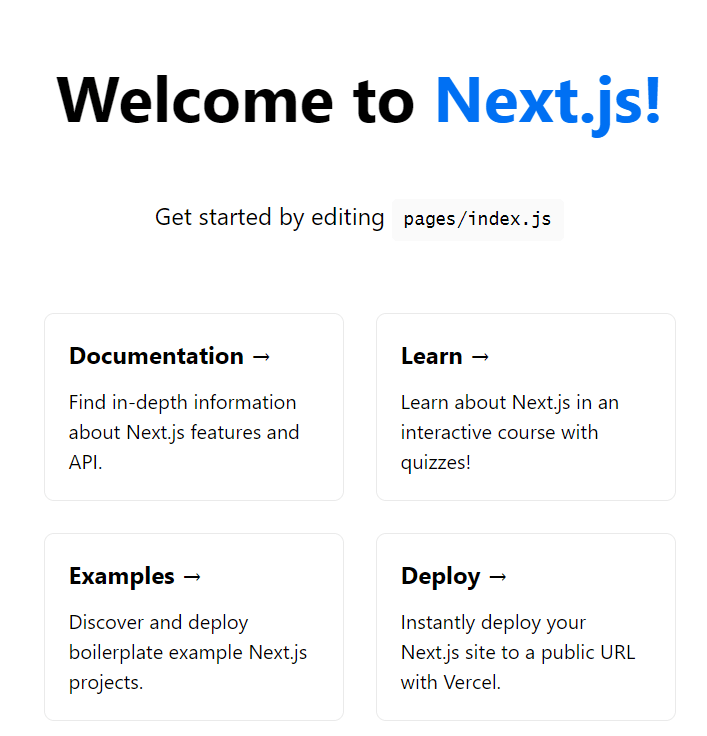How To Install Next.js on Ubuntu 24.04 LTS

Next.js has rapidly become a cornerstone in modern web development, offering a powerful and flexible framework for building React applications. This comprehensive guide will walk you through the process of installing Next.js on Ubuntu 24.04, providing you with the knowledge and tools to kickstart your Next.js development journey.
Whether you’re a seasoned developer or just starting with React, understanding how to set up Next.js on your Ubuntu system is crucial for creating efficient, scalable, and SEO-friendly web applications. Let’s dive into the world of Next.js and explore how to harness its capabilities on Ubuntu 24.04.
What is Next.js?
Next.js is an open-source React framework that enables functionality such as server-side rendering and generating static websites for React based web applications. It’s designed to optimize developer productivity and end-user experience through its intuitive API and powerful features.
Key features of Next.js include:
- Server-side rendering (SSR)
- Static site generation (SSG)
- Automatic code splitting
- Built-in CSS support
- API routes
- Fast refresh
Next.js is particularly well-suited for building large-scale web applications, e-commerce sites, and content-heavy platforms where performance and SEO are crucial. Its flexibility allows developers to create anything from simple landing pages to complex, data-driven applications.
Prerequisites
Before we begin the installation process, ensure that your system meets the following requirements:
- Ubuntu 24.04 LTS installed and updated
- Sufficient disk space (at least 1GB free)
- An active internet connection
- Basic familiarity with the command line interface
Additionally, it’s helpful to have some knowledge of JavaScript and React, although it’s not strictly necessary for the installation process.
Preparing Ubuntu 24.04
To ensure a smooth installation process, let’s start by updating your Ubuntu system and installing some essential packages:
sudo apt update
sudo apt upgrade -y
sudo apt install build-essential -yThese commands will update your package lists, upgrade installed packages, and install the build-essential package, which includes necessary compilation tools.
Installing Node.js and npm
Next.js requires Node.js and npm (Node Package Manager) to function. While you can install Node.js directly from Ubuntu’s repositories, using Node Version Manager (nvm) provides more flexibility in managing Node.js versions.
Installing nvm
To install nvm, run the following command:
curl -o- https://raw.githubusercontent.com/nvm-sh/nvm/v0.39.1/install.sh | bashAfter installation, close and reopen your terminal or run:
source ~/.bashrcInstalling Node.js using nvm
Now, let’s install the latest LTS (Long Term Support) version of Node.js:
nvm install --ltsVerify the installation by checking the Node.js and npm versions:
node --version
npm --versionInstalling Next.js
With Node.js and npm installed, we’re ready to create a new Next.js project. Next.js provides a convenient tool called create-next-app for setting up new projects quickly.
Creating a New Next.js Project
Run the following command to create a new Next.js project:
npx create-next-app@latest my-next-appThis command will prompt you with several configuration options. For a standard setup, you can press Enter to accept the default options for each prompt.
Customizing the Installation
During the installation process, you’ll be asked about various features:
- TypeScript support
- ESLint for code linting
- Tailwind CSS for styling
- src/ directory for project organization
- App Router for file-based routing
- Customizing the default import alias
Choose the options that best suit your project needs. If you’re unsure, the default options provide a good starting point.
Configuring Next.js
After installation, navigate to your project directory:
cd my-next-appUnderstanding the Project Structure
Your Next.js project will have the following structure:
- pages/: Contains your application’s pages and API routes
- public/: Stores static assets like images and fonts
- styles/: Houses your CSS files
- next.config.js: The configuration file for Next.js
- package.json: Lists project dependencies and scripts
Modifying Configuration Files
You can customize your Next.js application by modifying the next.config.js file. For example, to add custom webpack configurations or environment variables, you might add:
module.exports = {
reactStrictMode: true,
webpack: (config, { isServer }) => {
// Custom webpack config
return config
},
}
Setting up Environment Variables
Create a .env.local file in your project root to store environment variables:
touch .env.localAdd your environment variables to this file:
API_KEY=your_api_key_here
DATABASE_URL=your_database_url_hereRunning Your Next.js Application
To start your Next.js application in development mode, run:
npm run devThis command starts the development server. You can access your application by opening a web browser and navigating to http://localhost:3000.
Next.js offers hot reloading, which means your changes will be reflected in the browser immediately without needing to refresh the page manually.

Building and Deploying Next.js
When you’re ready to deploy your Next.js application, you’ll need to create a production build:
npm run buildThis command creates an optimized production build of your application in the .next folder.
To start the production server, run:
npm startDeploying to Various Platforms
Next.js can be deployed to various platforms, including:
- Vercel (created by the Next.js team)
- Netlify
- AWS
- Google Cloud Platform
Each platform has its own deployment process, but many offer seamless integration with Next.js projects.
Troubleshooting Common Issues
While installing and running Next.js, you might encounter some common issues:
Dependency Conflicts
If you encounter dependency conflicts, try clearing your npm cache and reinstalling dependencies:
npm cache clean --force
rm -rf node_modules
npm installBuild Errors
For build errors, check your console output for specific error messages. Often, these are related to syntax errors or missing dependencies.
Performance Problems
If your application is slow, consider using Next.js’s built-in performance optimization features like Image Optimization and Automatic Static Optimization.
Best Practices and Tips
To get the most out of Next.js, consider these best practices:
- Use dynamic imports for code splitting
- Implement server-side rendering for improved SEO and initial load times
- Utilize Next.js’s API routes for backend functionality
- Optimize images using Next.js’s Image component
- Implement proper error handling and logging
Updating Next.js
To update Next.js and its dependencies, run:
npm update next react react-domAlways check the Next.js documentation for any breaking changes or migration steps when updating to a new major version.
Congratulations! You have successfully installed Next.js. Thanks for using this tutorial for installing the Next.js open-source Javascript framework on Ubuntu 24.04 LTS system. For additional help or useful information, we recommend you check the official Next.js website.